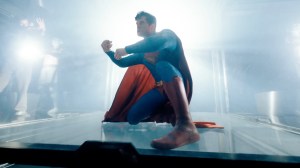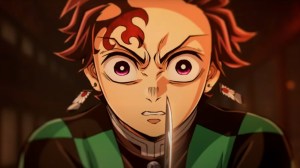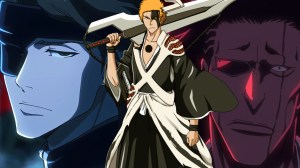Dragon Ball Z: Kakarot is one of the best, most thorough ways to experience the story of Dragon Ball Z. It encompasses and respects the source material while still being able to both abridge stories where needed and go beyond the scope of the manga and anime to tell untold stories. Its accuracy and faithfulness to doing Dragon Ball Z right are some of its most commendable qualities, but it’s difficult to consistently enjoy them when the storytelling and gameplay seem to frequently be at odds with one another.
Videos by ComicBook.com
Bandai Namco and CyberConnect2 set out to make a Dragon Ball Z RPG, and if you look at Kakarot part-by-part, they succeeded. You’ve got your skills that must be acquired and upgraded, characters that have to be leveled up, party members that provide different benefits, and side quests galore. There’s even a unique Soul Emblem system that capitalizes on different character’s strengths and allows for different “builds.” It’s an enticing platter of RPG systems that doesn’t look quite as pretty upon closer inspection.
Take the leveling system, for example, a core part of any RPG. You’ll swap between different characters throughout Kakarot including Goku, Gohan, Piccolo, Trunks, and others who you’d expect to play as. Completing quests with these characters and winning fights is the easiest way to level them up with experience also going towards support characters in your party, though those who aren’t with you still get a cut of the gains as well.
This system creates disparities between character levels, particularly those that support the playable fighters. Krillin is currently a much lower level than Gohan and the others in my game, which is to be expected to some degree, but it doesn’t feel rewarding to invest time or Z Orbs (the game’s resource used to unlock and upgrade skills) into him since it’s hard to tell when he’ll be usable in your party, even if you know the events of Dragon Ball Z. Even when you’re leveling up the characters you like the most, their advancements that would normally be a big to-do in other games are just a flash on the screen with a flurry of increased stats where you don’t know precisely what changed, but you know your character is better off because of it.
That thinking applies to the rest of the systems like cooking, Soul Emblems, and building your party with characters who are connected to one another to gain buffs. It’s just stat boost after stat boost in Kakarot no matter what you do.
Perhaps the most disappointing implementation of a Dragon Ball Z mechanic in Kakarot is the process of collecting the iconic Dragon Balls. You collect these wish-granting relics during “Intermissions” where players can roam about, train, and take on different activities between key story moments. The seven Dragon Balls are scattered around the map with indicators showing which zones they’re in, and even though finding them should be an exhilarating and difficult feat, it’s been turned into a chore. Just fast-travel to a zone that has a Dragon Ball, mark it on your map, and speed towards the destination to retrieve it. You’d expect enemies to be guarding it or something like that, but they’re always just laying on the ground, on a cliff, or underwater. You’ll probably end up spending more time in loading screens between zones than you do finding the Dragon Balls.
You can use those Dragon Balls to wish for more Zeni or Z Orbs, but since you rarely run low on those resources (assuming you’re not just flying through the story), you’ll want to wish for old enemies to be brought back to life so that you can acquire their Soul Emblems for some more stat boosts. Considering how tedious a process collecting the Dragon Balls becomes, imagine how disappointing it is to realize you can only fight these revived bosses using certain characters. It sucks the fun right out of what’s supposed to be one of the most powerful moments in Dragon Ball Z and instead turns it into an exercise of patience.
Combat succeeds where RPG mechanics can’t, though that’s still only true to an extent. You can pull off some truly flashy combos in Kakarot – using a melee Super Attack with multiple follow-ups to smash someone into the ground and then finish that with a point-blank Kamehameha seems exactly like something a Dragon Ball Z character would do and helps fulfill the fantasy of the game. If you can stay aggressive and deplete an enemy’s Stun Meter, you’ll be treated to unique cinematics for each of the Super Attacks. But like any fighting game, there’s a certain level of button-mashing you’ll have to deal with. Just lay on the melee button, make a few other inputs as needed to restore Ki or put distance between you and opponents, and mix in a few Super Attacks and you’ll be well on your way to becoming a defender of Earth.
It’s also worth pointing out how bad it feels to absolutely dominate an opponent in a fight only to have the next cutscene overshadow your S-Rank performance by abiding by the flow of the story. The puny Z Fighters were never going to beat Cell on their first tries no matter how well you did, but it still undermines players’ performances, even if that’s the way the story goes.
Even with all those faults, there’s still something special about Kakarot that’s evident to those who love Dragon Ball Z and hopefully to those who are experiencing it for the first time. The cinematic moments are recreated so faithfully that you can basically mouth the words along with the characters as they say them. Scenes like Goku turning on Frieza as he leaves Namek, yelling, “You fool!” and obliterating the villain will still send give you chills. No matter who your favorite character is or what moment you remember best from Dragon Ball Z, you’ll see some of the most incredible renditions of those parts in Kakarot.
Does that mean Kakarot is worth playing all the way through if you already know Dragon Ball Z? It’s impossible personally to speak from the perspective of someone who’s new to the material, but as someone who holds the series in high regard, Kakarot is worth the experience, even if it’s tedious at times. It’s best broken up into multiple play sessions, just as the game provides intermissions as opposed to barreling through the story to avoid getting burnt out. Even if it doesn’t get everything right, it’s a tremendous effort and will hopefully pave the way for more innovative Dragon Ball Z experiences.
Rating: 3 out of 5
Dragon Ball Z: Kakarot is now available for the PlayStation 4, Xbox One, and PC platforms. A PlayStation 4 code was provided by the publisher for the purpose of this review.









